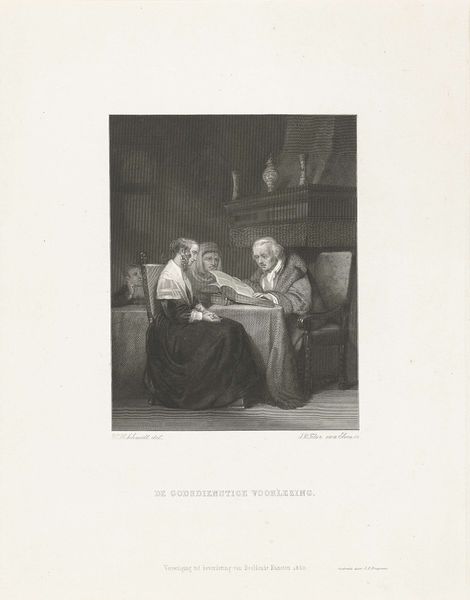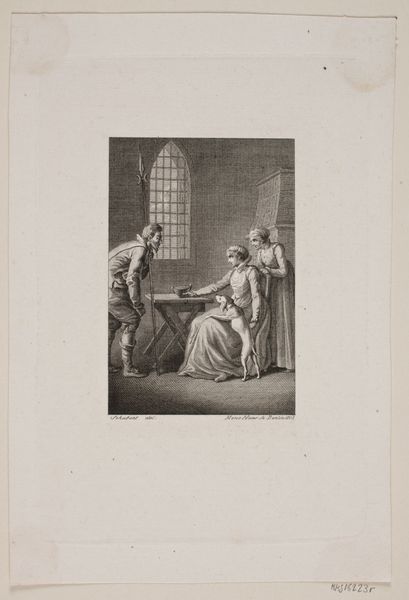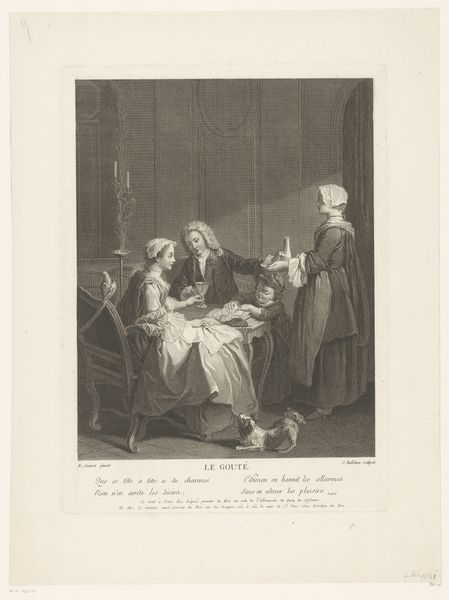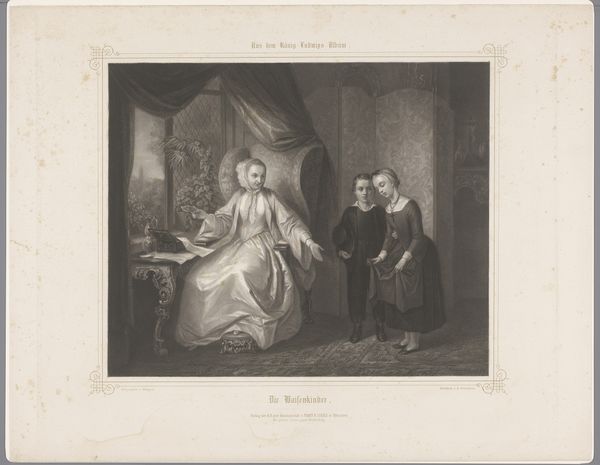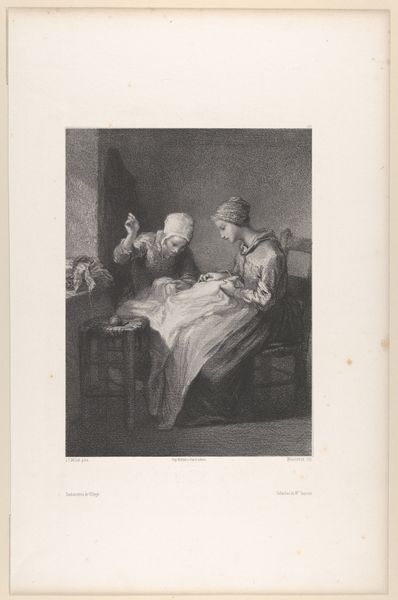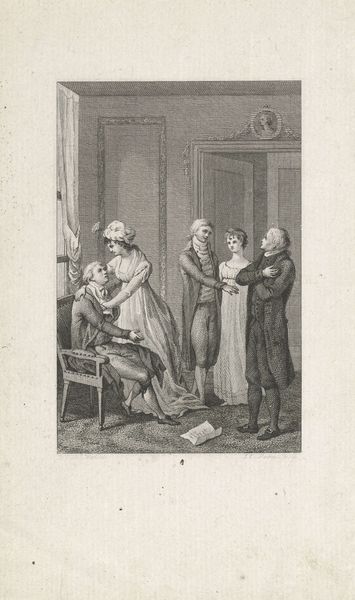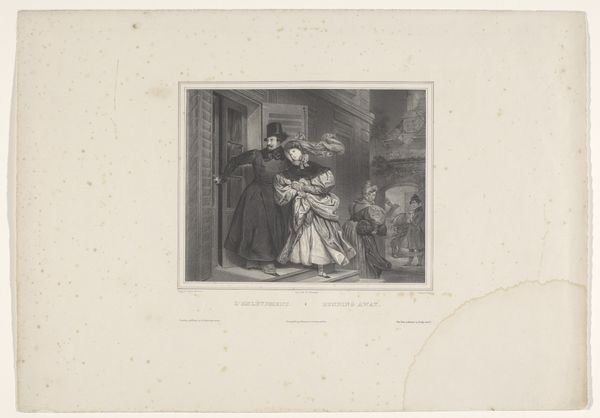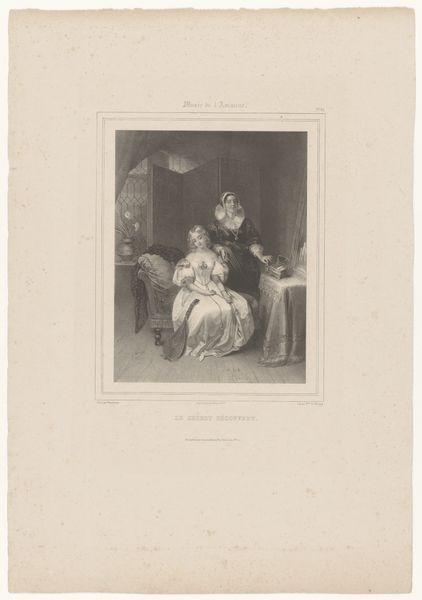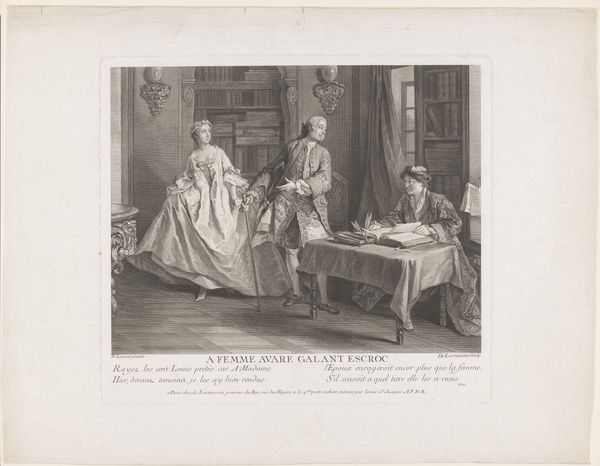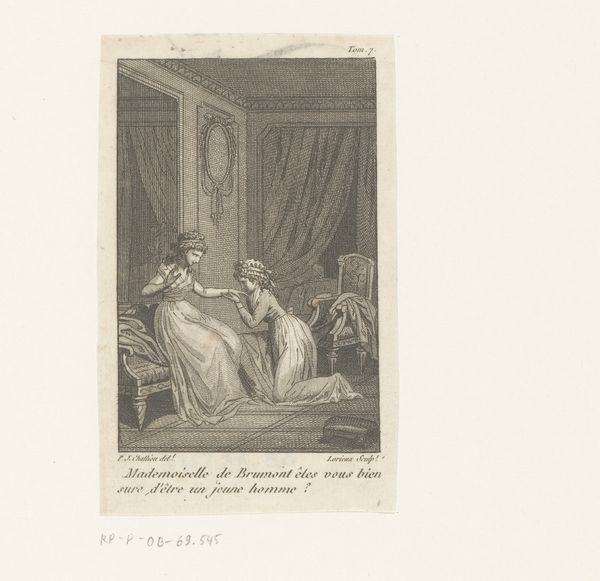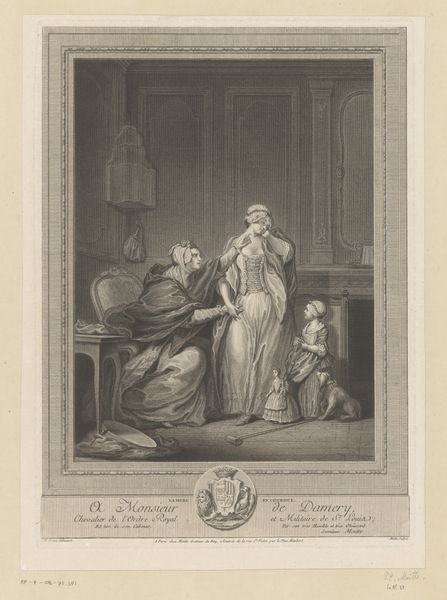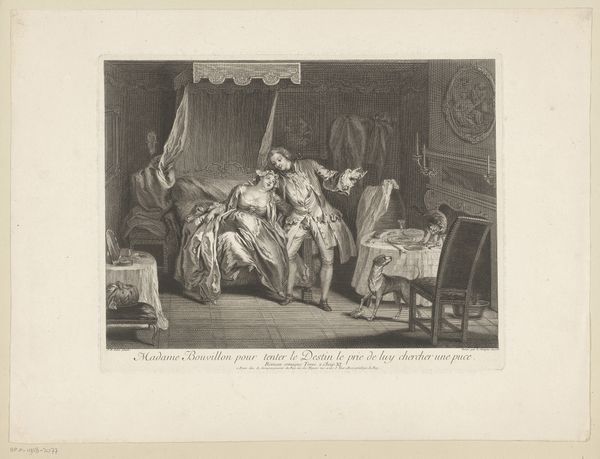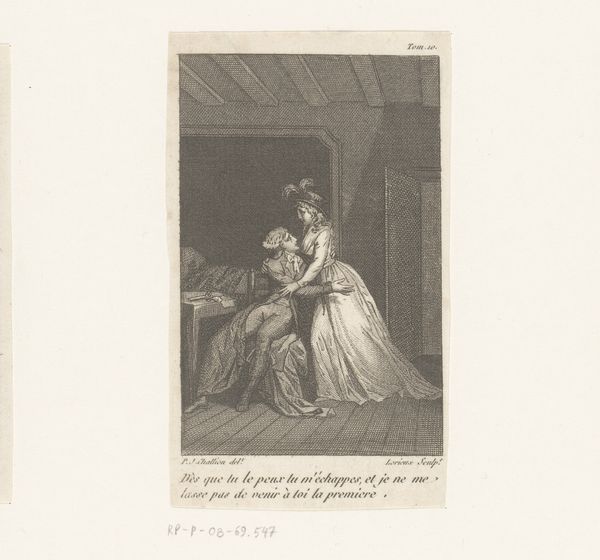
Dimensions: 400 mm (height) x 286 mm (width) (billedmaal)
Curator: Welcome. We’re standing before a piece from the late 1880s titled, "Episode af maleren Poulsens ungdomsliv," or, “Episode from the Youth of the Painter Poulsen," attributed to Adolph Kittendorff, housed here at the SMK. Predominantly rendered using pencil, with lithographic and etching processes adding detail and depth to the prints. Editor: The scene is immediately striking, especially the tonal range achieved with just pencil— the contrasts in light and shadow really carve out the drama of the moment. I am drawn to the texture rendered in the dress, it creates a stunning composition and makes it pop. Curator: Indeed. Structurally, the artist plays with a distinct triangulation of gazes—from the attentive couple at the keyboard, to the disapproving elder, hands clasped tightly, eyes downward cast and seemingly contemplating morality and social codes. Consider also how the dress amplifies the female subject, and the subtle bust in the corner. What impact does the implied narrative have on you? Editor: From a materialist perspective, I consider the production. This artwork highlights the societal pressure imposed on artists. I also reflect on the tools—the types of pencils available, the quality of paper, and how these elements impact the final work. In this case, I find myself asking what the historical circumstances were that led this moment to be captured and memorialized in pencil, a readily accessible, and common tool for image creation at the time. It prompts an interesting question about accessibility of fine arts practices within domestic spaces, right? Curator: That’s insightful—it bridges medium to message. Perhaps we're seeing how societal narratives gain visibility through widely accessible materials. It presents an engaging exploration of romantic encounters shaped and documented within the limits and possibilities of the available mediums. Editor: Precisely. It demonstrates that even simple materials, when combined with acute observation, and historical reflection, can yield artwork that still manages to speak profoundly across generations and provide nuanced social critique. The labor and context is key to understanding the choices made by Kittendorff and the value of his output. Curator: An intersection of societal scrutiny and the intimate artistry in its rendering... Food for thought, indeed. Editor: Indeed, material constraints meet emotional depths! A final assessment of what one can express with basic implements in any context.
Comments
No comments
Be the first to comment and join the conversation on the ultimate creative platform.
